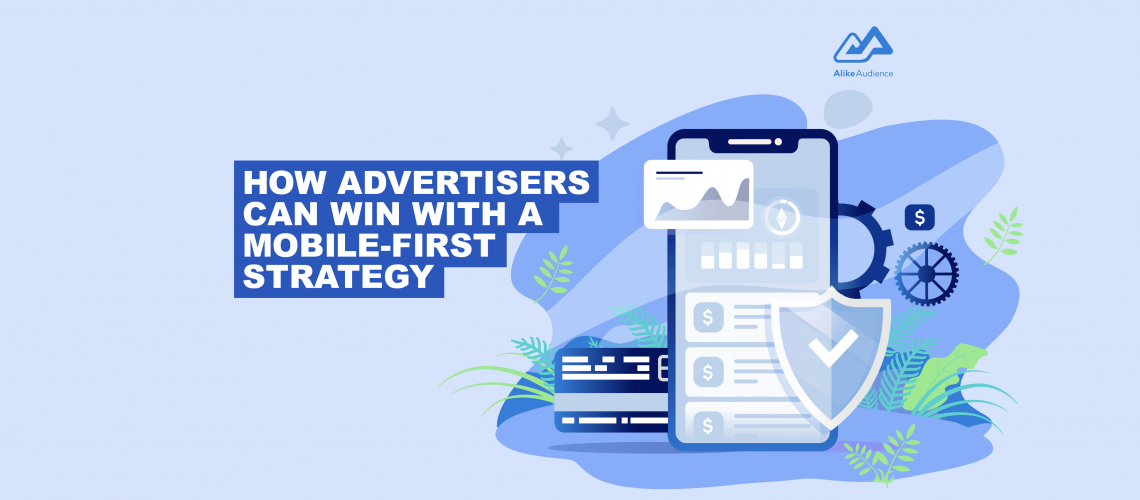With more consumers using mobile devices to interact with their favorite companies and brands than ever before, the emergence of mobile-first advertising strategies has become an essential aspect of successful digital marketing campaigns.
Unlike traditional advertising, targeted marketing lets advertisers place their content in front of their specific target demographic. The prevalence of mobile programmatic advertising highlights the importance of mobile user data in helping businesses streamline the process of user segmentation. By going mobile-first, advertisers can connect and reach their audience in an easier, more meaningful way.
In this post, we’ll dive into how mobile data has become an increasingly important tool for the modern-day advertiser’s arsenal, why mobile marketing has become the number one way to reach target audiences, and how you can ultimately apply it across your campaigns.
What is a mobile-first advertising strategy?

In digital marketing, advertisers using a mobile-first strategy develop their sites in a way where their mobile-enabled apps are given higher priority over their desktop versions. Many companies today are increasingly utilizing this strategy in their marketing campaigns, prioritizing mobile versions of their web pages due to the popularity of phone-based internet browsing and online shopping among consumers.
Mobile-first strategies were once a relatively rare practice within the marketing industry, but with the rise of digital media platforms, this approach has become increasingly common. Going forward, mobile-first marketing strategies may become the norm, with the decisions of major search engines and tech companies to prioritize mobile versions of their sites.
But just how important has the mobile-first approach become for advertisers in today’s digital marketplace? According to recent Statistica data, the use of mobile phones increased rapidly each year, with mobile accounts now accounting for over half of web traffic worldwide. In the second quarter of 2022 alone, mobile devices generated 58.99% of global website traffic.
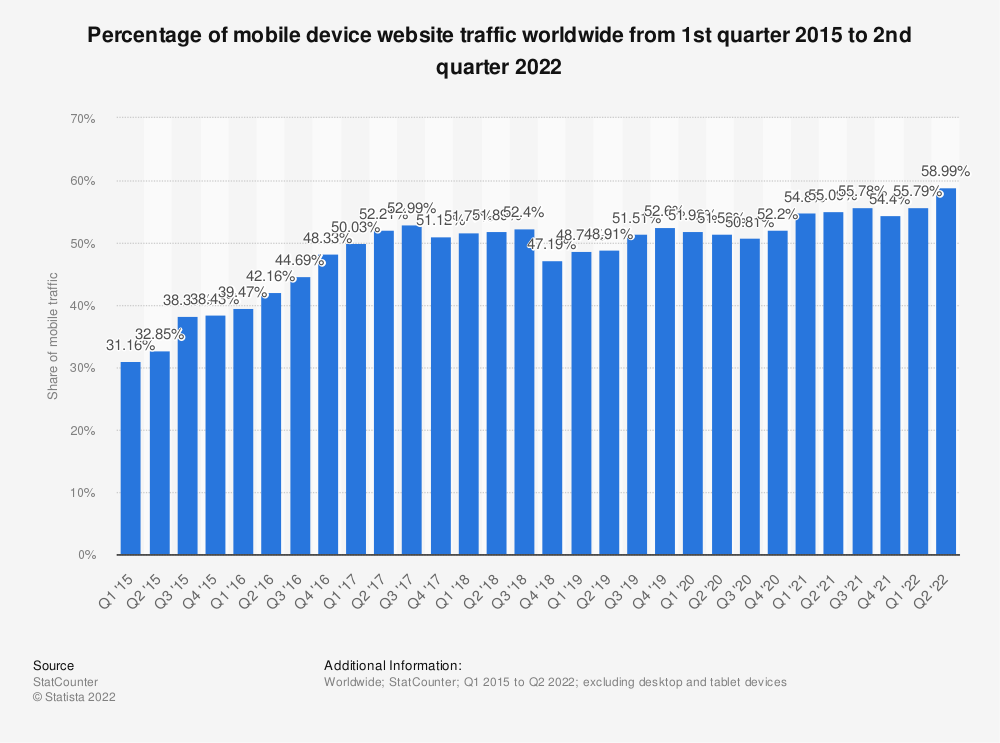
This puts mobile devices way ahead of consumers using desktop platforms. While you could choose to optimize their website for desktop users, your site will potentially be missing out on a lot if it’s not optimized for mobile.
But to understand why implementing a mobile-first approach is crucial for your brand’s marketing strategy, it’s important to first unpack the concept of mobile programmatic advertising itself.
What is mobile programmatic advertising, and how does it work?
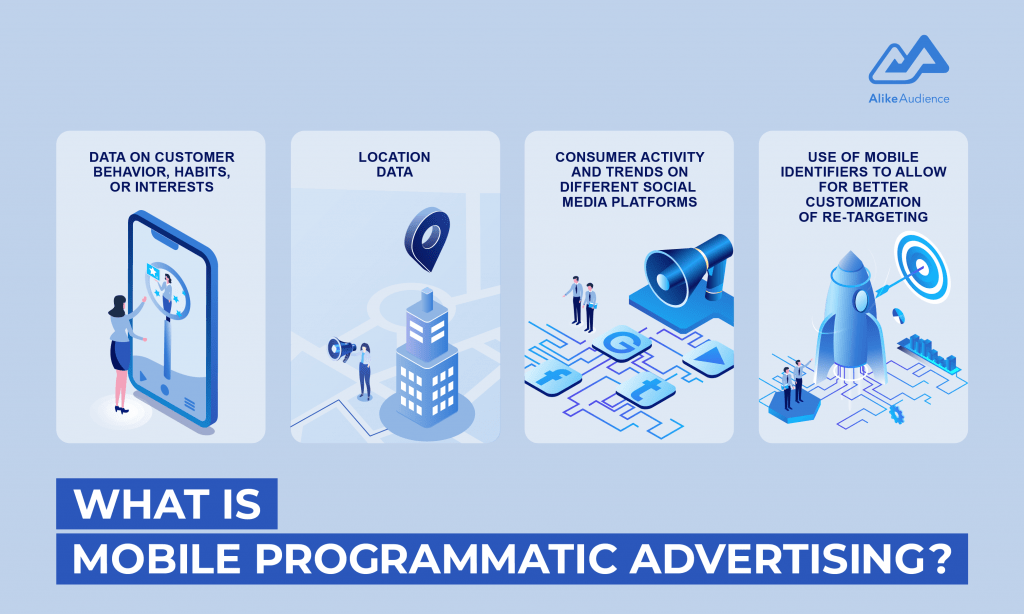
You may be familiar with programmatic advertising as a way to automatically buy and optimize your digital campaigns, rather than buying directly from publishers.
Similarly, mobile programmatic advertising refers to the automated buying and selling of ad placements, but specifically display ads for mobile devices. These typically include video ads, mobile native ads, banner ads, and other ads optimized for mobile.
Mobile programmatic advertising provides marketers with a range of data that are important to consumer insights, namely:
• Data on customer behavior, habits, or interests
• Location data
• Consumer activity and trends on different social media platforms
• Use of mobile identifiers to allow for better customization of re-targeting
Programmatic media buying is one of the largest and fastest-growing areas in the digital marketing and advertising industry. The market itself accounts for around two-thirds of total digital display spending worldwide and 85% of digital advertising spending in the United States, according to 2020 data from the Interactive Advertising Bureau (IAB).
Let’s dive deeper and understand the importance of mobile data in digital advertising, and how you ensure a mobile-first approach when planning your next advertising campaign.
Why is mobile data important to advertisers’ marketing strategy?

Having a solid mobile-first strategy is key to the success of every campaign you put out. As mobile apps offer different monetization strategies for various app verticals, opting for a mobile-first advertising strategy lets marketers identify new channels that can help generate more revenue.
Mobile data can be used by advertisers in a variety of ways and are well-suited to both branding goals and performance campaigns. It helps brands improve audience insights, gaining a comprehensive understanding of customers and their path-to-purchase journey. Additionally, some retailers are finding success in using location-based data to improve attribution analysis of marketing campaign effectiveness.
Mobile-enabled data guarantees digital marketers obtain valuable user insights that are essential for improving their overall advertising strategies, traffic, and website performance. These include comprehensive, data-driven solutions to gain a better understanding of the interests of a specific target audience, namely their demographic and behavioral aspects.
The mobile-first strategy is all about flexibility, improved functionality, and building a strong relationship with your customers. So how exactly do companies utilize this strategy throughout their digital marketing campaigns?
What are the benefits of having a mobile-first approach?
Companies looking to utilize mobile data to improve data analyses can turn to data enrichment providers to integrate third-party data to pair with a company’s first-party data, allowing for better feature engineering and data at scale.
Data published by Statista showed that global spending for mobile-first advertising is projected to reach a record of US$327.1 billion by the end of this year. This latest figure is an increase of 17.2 percent compared to the previous year, with spending expected to amount to around US$399.6 billion by 2024.
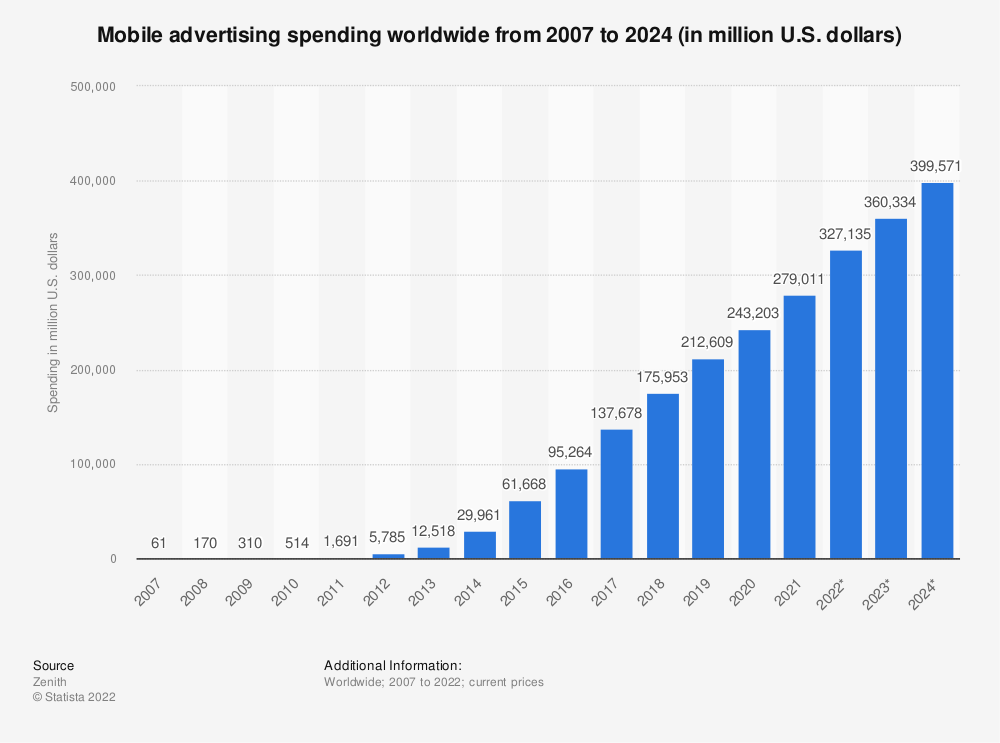
There are a number of benefits that arise when a brand is truly using a mobile-first approach for its digital advertising campaigns:
- Higher customer reach and retention: The mobile-first strategy provides the opportunity to reach new customers. With a mobile-first strategy, your brand can tap into new markets while offering simplified product distribution. So if hitting new markets and creating new revenue channels is something your brand aims to achieve, becoming mobile-friendly is the way to go.
- Improved customer experience: Advertisers implementing a mobile-oriented approach in their campaigns that can exceed expectations in all digital solutions in the context of customer experience and site performance. As consumers become increasingly mobile, mobile-enabled apps provide a tailored user experience with a focus on the preferences of your target audience.
- Strong brand-customer relationship: A mobile-oriented approach brings many benefits in the context of marketers’ communication and interaction with their target audience. With many users actively searching for more channels to interact with your brand, advertisers with a strong customer relationship build trustworthiness, flexibility, and improved functionality for their brand.
- New channels of revenue: A mobile-first strategy lets advertisers expand their existing revenue channels and create new ones. Mobile-enhanced apps provide a range of monetization strategies for consumers, such as in-app purchases, paid products, upgrades, and premium features.
How can advertisers ensure a mobile-oriented strategy?

There are numerous ways advertisers can implement a mobile-oriented strategy to ensure high-performing website design, structure, and content. These include:
- High-performing website designs: Mobile sites that miss entire pages and information available on desktop sites risk harming your ability to rank higher in searches. To ensure you’re not making this mistake, build your page for mobile devices first, then scale up for desktop browsers.
- Consistent visual content: Remember to keep visual content the same on both mobile-enabled and desktop web pages. This means keeping the same alt text or URL for images, the same descriptions or captions, and removing unsupported image formats for mobile-enabled apps.
- Responsive website design: Web page design plays a crucial role in how your site will rank. To make the most of your mobile-first strategy, prioritize mobile device responsiveness by using site builders that let you create content for different platforms with ease.
In addition, there are also key strategies that digital marketers to remember when ensuring a high-quality, mobile-first approach for their advertising campaigns:
- Less text, more images: When applying a mobile-first strategy in your campaign, go for pages that have minimal text, larger font sizes, clean images, and simple functionality. In other words, think visually with straightforward conversion goals for your consumers.
- Make use of social media: Making use of popular social media platforms is a great way to create a solid mobile-first strategy. Being mobile-first entails means into account the format of your ads (vertical versus horizontal), as well as leveraging the opportunities that mobile can afford.
- Prioritize the first three seconds: In today’s mobile-heavy marketplace, advertisers need to design messages that are simple and easy for consumers to digest – quick and straightforward. Most people will have scrolled beyond an ad in 20 seconds, so advertisers must invest in making sure the message can be grasped by customers within a few seconds.
Having a strong mobile-first strategy also means having a strong data vendor to source mobile data from your desired target audience. At AlikeAudience, our mobile data processing model is purely algorithm-based, predictive, and privacy-compliant. So how do data vendors like AlikeAudience, source mobile data from users?
How does AlikeAudience source users’ mobile data?
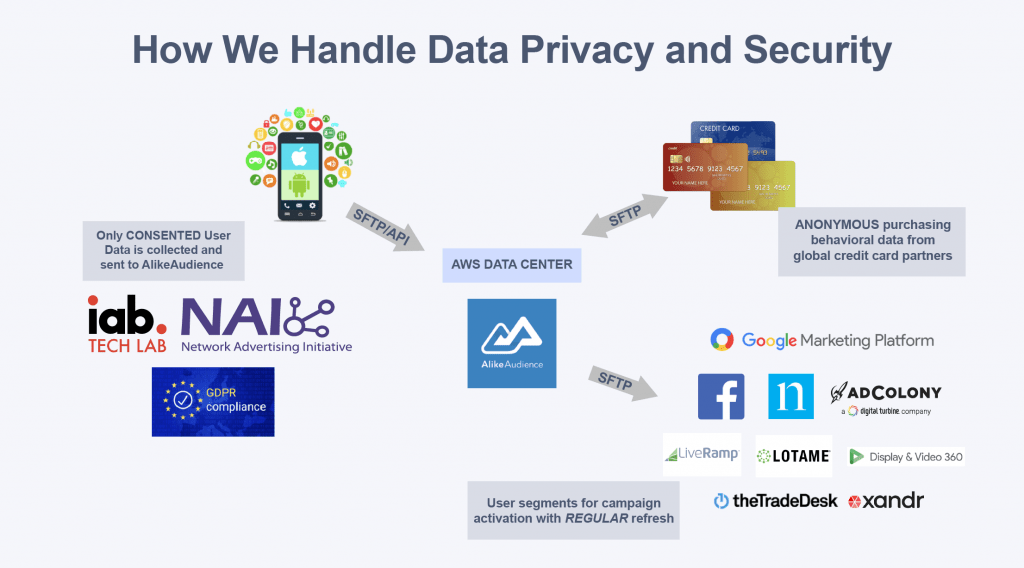
Recent political and social issues have amplified privacy concerns around data vendors and their role in the tech sector.
AlikeAudience licenses, processes, and onboards consented data, such as mobile advertising IDs (MAIDs), hashed emails, and other consented Personally Identifiable Information (“PII”).
We cleanse and process the data into predictive data with anonymous IDs, so personal information of any kind – like email addresses, phone numbers, and full names, are fully concealed. This is how we form the audience segments we offer today
We only collect consented user data from trusted data partners. The health audience segments at AlikeAudience, particularly pregnancy-related segments, are not collected from transactions or credit card data. Instead, consumer and mobile app data are processed to offer predictive user segments.
We only work with qualified data originators who license consumer-consented information for the legitimate use of programmatic advertising. Our audience data comes from consumers who provide emails on websites or agree to cross-app-tracking on their phones. Users may opt out at any time via the Network Advertising Initiative (NAI) Code of Conduct.
AlikeAudience only collects mobile advertising IDs that have been opted in by users themselves. These MAIDs are also completely pseudo-anonymous – meaning they do not reveal personal information of any kind, such as full names and dates of birth, and cannot be tracked down to any individual person.
AlikeAudience’s unshakable belief in mobility goes beyond smartphones, covering tablets, laptops, connected TVs, and any devices that enable individuals to interact with the digital universe no matter where they are in the physical world.

